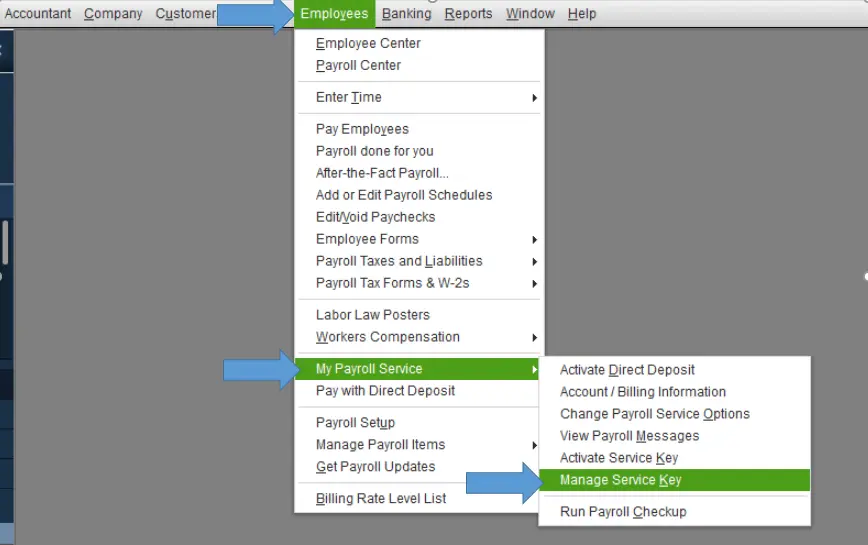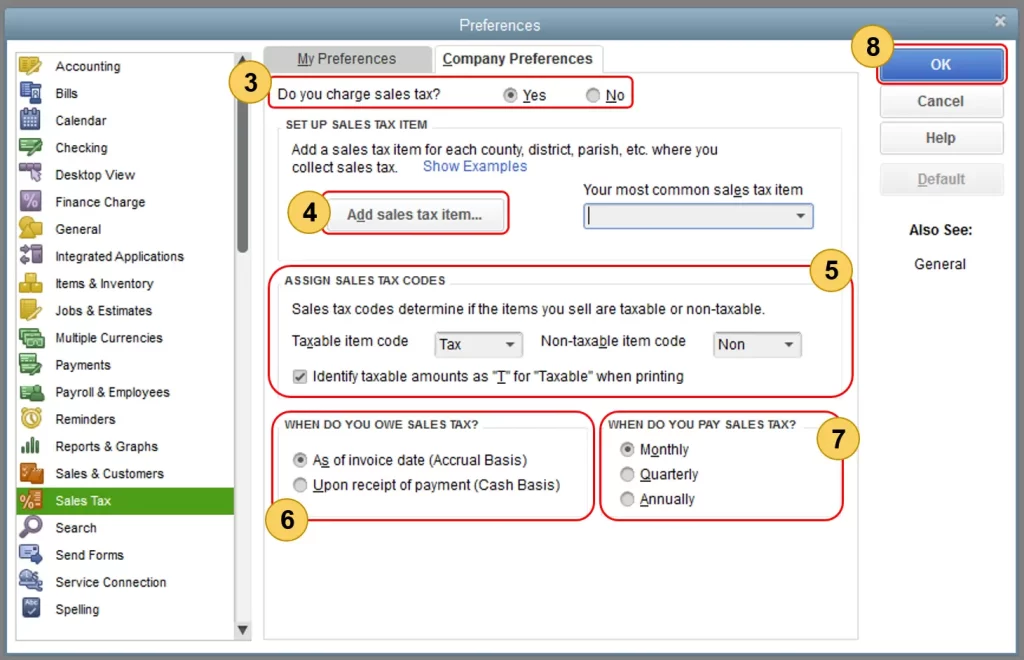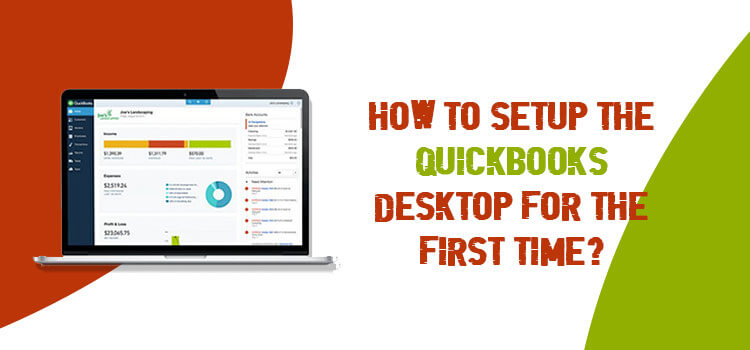Are you a new user and wondering “how to setup the QuickBooks Desktop for the first time” to get started with financial management?
Setting up the QuickBooks software offers robust features, automation, direct deposit, and advanced inventory management, making it ideal for businesses with complex needs, especially those in manufacturing or construction, and scalability for multi-user and multiple companies.
Learn how to set up QuickBooks Desktop as a new user in this detailed guide to manage the financial data conveniently.
Let’s Get Started with QuickBooks Desktop as a First-Time User
Setting up QuickBooks Desktop from scratch involves configuring various features for payroll automation and other tasks, including adding customers or vendors, employees, and setting up payroll. See how to set up the QuickBooks Desktop for the first time below:
1. Add your customers and vendors
Add your customers and vendors to QuickBooks Desktop with the steps below:
- Launch the Add/Edit Multiple List Entries window.
- Click on the List drop-down arrow.
- Choose the list you are working with.
- If the accounting records are already in your list, use the filter to find the particular record or set of records.
- This step is optional. In the Add/Edit Multiple List Entries window, choose the columns you want to add by selecting Customize Columns. This helps you focus on the columns you wish to work on.
- In the list, add or edit your entries.
- To add your new entries, click at the end of your list in the first empty row and start making your entries.
- To edit entries, choose any field and start making required changes.
- You can easily copy (Ctrl+C) data from Excel and paste (Ctrl+V) it into the Add/Edit Multiple List Entries window.
- If you want to copy the data in a specific field in the remaining records, just highlight the desired field. Right-click and select Copy Down. If there’s already data in the remaining fields, copying it might overwrite it.
- To duplicate a row, simply place your cursor in any row, right-click on it, and select Duplicate Row. The record will be duplicated into the next row and will be preceded by the word “DUP.”
- Click on Save Changes. If you see any errors, the list will clear all the saved records except the one with errors, so that you can make the required corrections. If you don’t see any error, your list with all saved records remains in view.
- Fix the error you might see in the list.
- Select Save Changes and repeat the process until the error is fixed.
Read More – How to Get a QuickBooks Payroll Tax Table Update
2. Set up QuickBooks Desktop Payroll
Before setting up, you must activate the payroll services as mentioned below. Explore QuickBookSupportNet to learn how to set up payroll’s various features, including direct deposit, tracking, and more.
- Open QuickBooks Desktop, then the company file.
- Go to Employees at the top.
- Choose Payroll.
- Hit Enter Payroll Service Key.

- Click Add.
- Enter the service key.
- Click Next, then Finish.
- Wait until the new tax table update downloads completely.
3. Add your employees
Don’t know if you can add employees to QuickBooks Desktop? See how you can add your employees for time tracking and automated pay:
- Launch the New Employee window:
- Go to Employees > Employee Centre.
- Hit on New Employee.
- Navigate to the Personal tab.
- Fill out the required information. Here, the employee’s name and date of birth are mandatory fields.
- Go to the Address & Contact tab and fill out all the necessary fields.
- Move to the Additional Info tab, and enter the required information you want to store for the employee.
- Enter necessary information in CUSTOM FIELDS, and/or choose Define Fields to add custom fields for tracking employee details, such as birthday or spouse’s name.
- Navigate to the Payroll Info tab. Input relevant details regarding compensation and benefits.
- In the Earnings section, click the Item Name drop-down menu.
- Pick or create an item, then enter the Hourly/Annual Rate.
- Under Additions, Deductions, and Company Contributions, open the Item Name drop-down. Example: benefits, retirement plans, etc.
- Choose or create an item, and enter the Amount and Limit for each selected or added item.
- Open the Payroll Schedule drop-down and choose or add a new schedule.
- Pick the Pay Frequency drop-down and choose or add a new frequency.
- Open the Class drop-down and pick or create a new class.
- Access Taxes and TD1 to configure Provincial, Federal, and Other taxes. Note: If setting up an employee in a new province, you will be prompted to enter the provincial taxes if they aren’t already set up.
- Click OK.
- Access Vacation Pay to configure sick leave and vacation details.
- Click OK.
- Go to Direct Deposit to set up direct deposit for employees via Telpay, a third-party service provider that will bill you directly.
- Click OK.
- Move to the Employment Info tab.
- Choose the Hire Date.
- Choose the Release Date for terminated employees and select the appropriate ROE Code for them.
- Click OK to save, or Next to add another employee to the list.
Learn More – How to Set Up and Process QuickBooks Payroll Direct Deposit
4. Set up the items you buy and sell
Learn how you can set up items that you buy or sell for your business to keep track of the inventory:
- Go to Lists at the top.
- Choose Item List (for Windows) or Items (for Mac).
- Hit on Item then New (for Windows) or plus + (for Mac).
- Hit on New Item.
- Choose the type of item you wish to create.
- Fill in the information in the item fields.
- Add your own customized fields in the Use Custom Fields.
- Click Save.
Read Also – How to Download QuickBooks Desktop for Windows and Mac
5. Set up your other accounts (bank accounts, etc.)
For the Direct-connect, you will need a password or PIN. Once you set up the account, you can download your electronic statements to your Bank Feeds. When you download transactions for the very first time, QuickBooks will automatically set up an account for Bank Feeds.
Before starting, look for your bank and see if the service is free or if there’s a fee.
Bank-provided credentials
For the direct connect, your bank provided the Customer ID and password (or PIN) for online banking setup.
You may also need these:
- Account Number: This is the number that your FI gives to your account when they create it. It appears on your banking statements. If you can’t find it, contact your FI.
- Routing Number: FIs have a 9-digit number called a routing number. You can usually find it on a check for the account. If you can’t find it, contact your FI.
- Account type: You’ll need to know how your financial institution classifies your account, not how QuickBooks does.
| Account Type at FI | Account type in QB |
| Checking | Bank |
| Savings | Bank |
| Money Market | Bank |
| Line of Credit | Bank |
| Credit Card | Credit Card |
| Line of Credit | Other current liability |
- Go to Banking.
- Select Bank Feeds.
- Choose Set up Bank Feeds for an account.
- Enter your bank name and select it in the Bank’s name field.
If you are a new user or enrolling for the first time, select the Enrollment Site link. You will need to apply for Direct Connect. For the application approval from your bank’s end, contact the support team. Ask them if you will require special sign-in credentials.
After enrollment:
- Click Continue.
- Enter the credentials, such as Online Banking user ID and Password.
- Hit Connect to connect your QuickBooks to your bank’s server.
- Choose the bank account you wish to connect to your QuickBooks account.
- Select Finish once the connection finishes.
Also Read – QuickBooks Desktop 2024
6. Make sure QuickBooks is up to date by entering all transactions that occurred before your start date
Enter the opening balance before you start recording your transactions. When done, go to your account register and make sure all the information is correct. Your Opening Balance Equity account should not have any remaining balance.
- Go to Lists in the top menu bar.
- Select Chart of Accounts.
- Look for the Opening Balance Equity account and open it.
- Check the account balance, as it should be 0.00.
If the account balance isn’t 0.00, don’t worry. Note down the remaining balance and run a Balance Sheet Report for last year.
- Go to Reports at the top.
- Select Company & Financial.
- Hit on Balance Sheet Standard.
- Choose Last Fiscal Year from the Dates drop-down.
- In the Equity section, review the Retained Earnings balance.
Finally, compare the last year’s Retained Earnings balance with the remaining balance in your Opening Balance Equity account.
Also See – Learn to Fix QuickBooks Payroll Update Error
7. Set up your sales tax information (if you charge sales tax)
Learn how to set up sales tax information in QuickBooks Desktop:
- In QuickBooks, go to the Edit menu.
- Choose Preferences. This will open the Preferences window.
- Select Sales Tax, then go to the Company Preferences tab.

- Click Yes to enable the sales tax.
- Now, set up the sales tax items or sales tax groups for each county, district, city, etc., at each location where you will collect taxes. Click on Add sales tax item to do so.
- Assigning sales tax codes helps track taxable and non-taxable sales or customers. By setting the correct tax code, you can generate reports that separate taxable from non-taxable sales. When sales tax is enabled in QuickBooks, two default tax codes are created: TAX (for taxable items) and NON (for non-taxable items). TAX is used for items and customers where tax must be collected, while NON applies to tax-exempt customers like non-profits, out-of-state buyers, or resellers.
Conclusion
In conclusion, this guide covers everything you need to know to setup the QuickBooks Desktop for the first time, helping you manage your business finances and accounting in one place. While the process may seem daunting, this guide simplifies it.
If you need additional help or prefer someone to set it up for you, feel free to call a QuickBooks ProAdvisor at +1(866)500-0076 for assistance.
Frequently Asked Questions
- How do I try using QuickBooks Desktop before burying it?
You can try downloading QuickBooks Desktop. The only official way is by downloading the 30-day free trial of QuickBooks Desktop Enterprise. For QuickBooks Online, you can try the risk-free sample company, which is a good way to see how the two platforms differ.
- How do I set up QuickBooks for the first time?
To get started with QuickBooks, you need to create an account, choose a plan, and set up your company’s profile by entering basic information and connecting your bank accounts.
Once the initial setup is complete, you can begin entering customers, vendors, and products/services, and then start using QuickBooks to manage invoices, expenses, and financial reports.
- How do I start a new QuickBooks company file?
To start a new QuickBooks company file, click Create a new company from the No Company Open window or go to File > New Company. You can then choose between Express Start for a quick setup or Detailed Start for more control, and follow the on-screen prompts to enter your business information.

